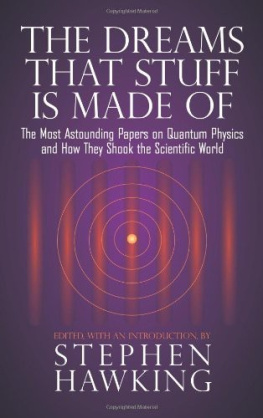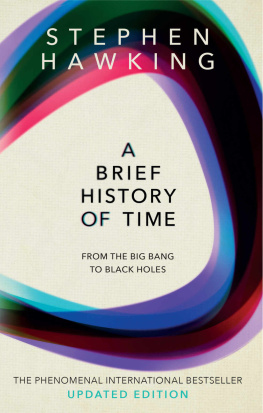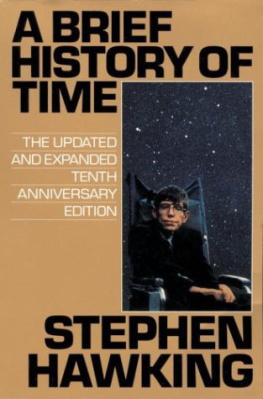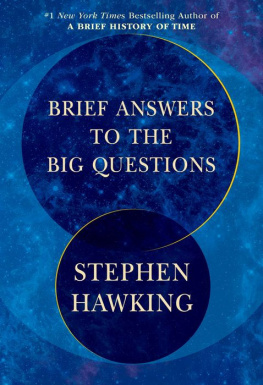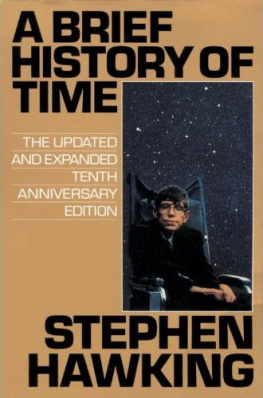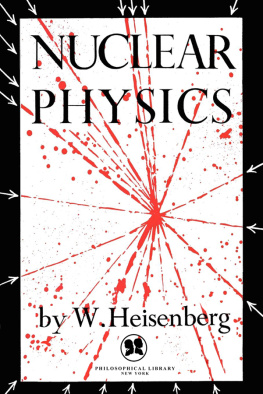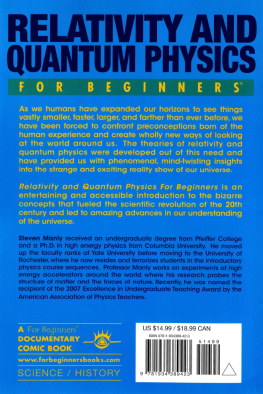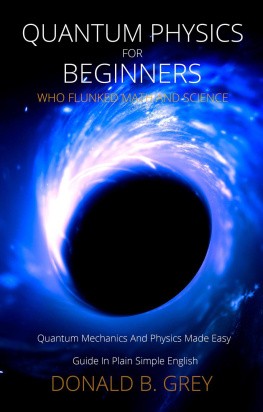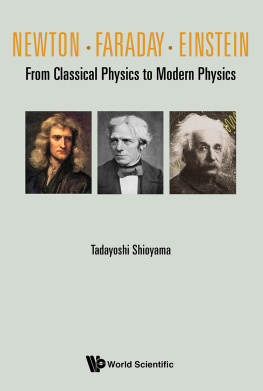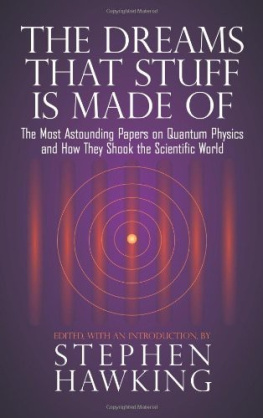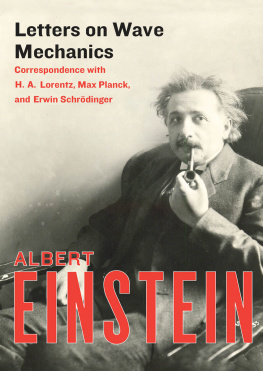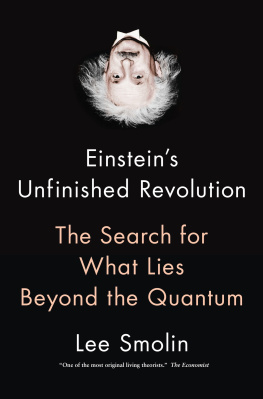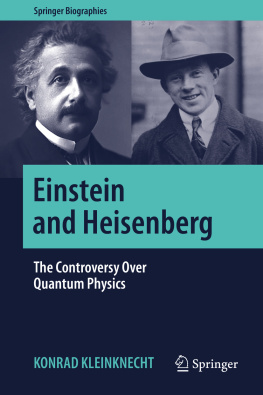Table of Contents
A Note on the Text
The texts in this book are based on translations of the original printed editions. We have made no attempt to modernize the authors own distinct usage, spelling, or punctuation, or to make the texts consistent with each other in this regard.
INTRODUCTION
BY STEPHEN HAWKING
T he goal of physical science is to explain what the universe is made of, and how it works. Ever since Kepler, Galileo, and Newton, we have represented our knowledge of natural phenomena through physical laws. These have evolved over time, as we have enlarged the domain of our observations. When, early in the twentieth century, physicists developed the tools to investigate the structure of atoms and their interaction with radiation, they discovered that their picture of Nature, which was based on observations of the objects of everyday life, was inadequate in a fundamental way. This fascinating volume employs original texts to trace the development of the revolutionary new concepts required to explain Nature at and below the scale of atoms. It is a compelling story, a tale of troubling observations and profound flashes of insight, leading to a new world-view in which familiar properties such as position and momentum take on a new meaning, ideas such as the trajectory of a particle have to be abandoned, and the very idea of what is meant by prediction has to be redefined.
It was observations of the light produced by glowing objects, called black-body radiation, that first challenged the credibility of the old classical picture. Not only did the theory based on that picture not match experimental observations, it also predicted that an infinite amount of radiation would be emitted by such bodies. That is an absurd result. In 1899 Max Planck showed that he could derive the correct mathematical description if he made what seemed at the time to be a limited and ad hoc assumption: that, for any frequency of light, there is a fundamental unit of energy. As a result, the energy radiated by the black body at any frequency must be an integer multiple of that fundamental quantum.
Around the same time, the classical picture also failed to explain the nature of another phenomenon, the photoelectric effect, in which electric current is produced when light strikes metals. In 1905 Albert Einstein employed Plancks idea to account for the mystery. But Einsteins explanation had importance that reached far beyond the photoelectric effect. By employing the quantum to explain a phenomenon unrelated to blackbody radiation, Einstein had shown that Plancks idea had fundamental significance, and was not just a mysterious property of blackbody radiation. Quantum physics was born.
In the ensuing two decades, experimental observations revealed new mysteries, and the quantum always seemed to be the idea needed to solve the puzzle. Ernest Rutherford and Hans Geiger, for example, conducted experiments that seemed to show that the protons in an atom are clumped together at its center, the nucleus, while the electrons orbit around them. But according to classical theory, charged particles travelling in that manner should radiate away their energy, and spiral inward. Why then, are atoms stable?
Niels Bohr employed the quantum idea to explain this. He proposed that the radius of electron orbits, like energy, is quantized. That would mean that electrons can only be at certain discrete allowed distances from the nucleus, and therefore cannot spiral inward. In Bohrs model, when an electron jumps from one allowed orbit to another, it emits or absorbs energy. In this way, he explained the atomic spectrum of hydrogen.
The idea of quantized distances and energy levels in an atom was another indication of the universality of the quantum principle, but quantum theory didnt become a fully developed theory until Werner Heisenberg and Erwin Schrodinger developed their equations in 1926, describing how a quantum system will evolve over time, and under the influence of any force. A few years later, Paul Dirac showed how to modify that theory to include special relativity. Diracs theory required the existence of a new kind of matter, anti-matter. Quantum theory had predicted the existence of the positron, which was discovered in experiments performed soon thereafter.
The success of quantum theory, and its interpretation, raised many philosophical issues because quantum theory is non-deterministic, meaning that when a system starts in a given state, the results of measurements on its future state cannot in general be precisely predicted. One can calculate the probability of obtaining various results, but, if repeated, experiments that all begin with the same initial state can produce different results. The development of quantum theory meant the end of the idea that science could in principle predict all future events given enough information about the system at present. That bothered many physicists, such as Einstein and Schrodinger, who raised arguments against quantum theory, but their specific objections were eventually shown to be invalid.
Today, thanks to Richard Feynman, we know that quantum theory means that a physical system doesnt have a single history, but rather has many histories, each associated with a different probability. That picture was used to create a theory of quantum electrodynamics, which explains how quantum particles interact with electromagnetic fields, and how they emit and absorb radiation. The predictions of quantum electrodynamics match experimental observations to a degree of accuracy unparalleled in the rest of science.
As this volume traces all these developments we are reminded of Bertrand Russells words, We all start from naive realism, i.e., the doctrine that things are what they seem. We think that grass is green, that stones are hard, and that snow is cold. But physics assures us that the greenness of grass, the hardness of stones, and the coldness of snow are not the greenness, hardness, and coldness that we know in our experience, but something very different... It is these dreams that stuff is made of.
Chapter One
T he question of the nature of light has been a central issue for much of the history of physics. Isaac Newton theorized that light was particle-likea beam of light was a stream of little particles in much the same way that a stream of water is composed of tiny water molecules. Because of his reputation as one of the great founders of physics, his theory of light was widely accepted. However, in 1801 Thomas Young definitively showed that Newtons particle theory could not be the complete description of light. He demonstrated that light incident on two closely-spaced narrow openings produces an interference pattern on a distant screen. Interference is a wave phenomenon and cannot be explained by a particle theory of light. Another major blow to the particle theory of light came in the 1860s when James Clerk Maxwell united the theories of electricity and magnetism and showed that light is an electromagnetic wave. Thus the wave theory of light was on very good experimental and theoretical grounds.
However, in the early twentieth century, the groundbreaking explanations of two troubling observations changed our understanding of light and began the quantum revolution, in which we find that light and matter have both wave- and particle-like properties. The first of these was the explanation of the shape of the black-body radiation spectrum.
We have all seen hot things glowthe red glow from the dying embers of a fire or the heating coils on a stove, the light produced by the tungsten filament in a normal incandescent light bulb, even the brilliant white light emitted from the surface of the sun are all examples of the same phenomenon. We call the light produced by glowing hot objects, black-body radiation. We experience it every day and in many different ways. It seems very ordinary, so it is surprising that to understand black-body radiation required a break from classical physics and opened the door to the revolution of quantum mechanics. But this is precisely what happened.

